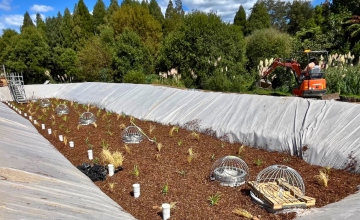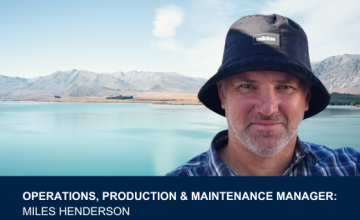The future of roofing is green : An interview with Greg Yeoman
30 August 2016
Stormwater runoff can cause big issues – especially in urban areas.
Greg Yeoman explains how green roofs and green infrastructure create the ideal solution for potential issues created by urban intensification.
The way traditional stormwater systems work, we end up disposing of and wasting a lot of water – something that is only going to become more of a problem as our urban areas intensify. Greg Yeoman from Stormwater360 says the incoming Unitary Plan will be good for the city, but there’s one problem.
“Our pipes are already pretty much at capacity,” he says. “Additional stormwater runoff from impermeable areas means we will need be smarter about how we dispose of the runoff. We need to think about systems that will soak up water and infiltrate it back into the aquifers the way nature does.”
The solution? Green infrastructure.
What is green roofing?
While it is a young science, Yeoman says green infrastructure can change storm water systems and drastically improve our urban environments. “In many cases, you can reduce water runoff by as much as 70 per cent, which has huge downstream savings,” he says.
Many engineered storm water systems sit underground, and focus on filtering water runoff so pollutants don’t get into water courses. Green infrastructure, on the other hand, sets up a natural environment, often replacing large areas of concrete, tar seal or roofing – think car parks and large roofs.
By establishing a green roof on top of a building, the plants and growing media soak up the rainfall and evapo-transpire the moisture back into atmosphere. “The result of the evaporation and plant transpiration mean water is slowed down and released directly back into the atmosphere without having to pass through a pipe network.
Green infrastructure reduces water runoff, and can allow for the reuse of water. Effectively, people can build bigger buildings with a smaller footprint, reduce the heat impact of city blocks, and improve a building’s aesthetic qualities all in one swoop.
“Green infrastructure is the way many councils want to move forward,” Yeoman explains. “Auckland has a higher level of urban intensification in the pipeline, so this is definitely the preferred way forward.”
How do you install green infrastructure?
While useful for both residential and commercial application, using green storm water infrastructure means considering a few important points. For example, Yeoman says green infrastructure is a living thing, so planting a green system from scratch can take several years to fully establish and will need to be maintained to ensure survival. Structures carrying green roofs will also need to be engineered to ensure they can carry the additional load of the growing media, plants and additional water storage in the system. The ‘LiveRoof’ modular green roof system by Stormwater360 is pre-grown off-site so it is established with healthy plants from the day the modules are laid on the roof and the removable sides are taken off to create a seamless green roof.
Ongoing maintenance is also required. “With a green roof, a walkover every couple of months minimum will be required to remove weeds before they seed. This saves a lot of time and money in the long run.” Stormwater360 ‘LiteRoof’ green roof media is a lightweight media with minimal organic content, to minimise additional building structure and maintenance requirements.
Permeable paving is an effective solution to reduce runoff from carparks, access-ways, berms and forecourt areas. Permeable paving allows water to pass through voids in the paving into the ground below. The amount of water that can be disposed of with permeable paving depends on the subgrade. For example sandy or gravel based soils will allow much more water to soak away than clay soils. Stormwater360’s ‘Grasscrete’ permeable paving system uses steel reinforced concrete with grasses voids, so can carry heavy traffic loads and emergency vehicles without distorting or cracking.
The type of soil used in green roofs must be lightweight and low in organic content to reduce structural and maintenance requirements.
With new innovative solutions for treating runoff volume and pollutants from paving and roofing, Yeoman adds that by implementing green infrastructure, you are reducing the human impact on the environment.
“Pollutants and excess water runoff all get significantly reduced with the use of an environmentally friendly stormwater system. Green infrastructure deals with these crucial issues in a much smarter way than many existing urban drainage systems.”
Original article can be found here : http://blog.archipro.co.nz/architecture/the-future-of-roofing-is-green-an-interview-with-greg-yeoman-of-stormwater360/?utm_source=Full+List&utm_campaign=eecf966c89-July16_Product_Email7_21_2016&utm_medium=email&utm_term=0_8fc43db661-eecf966c89-276818105





